Mental health issues impact millions. Many still find it hard to get affordable help for their emotional well-being. Art therapy and mental health are a strong pair. They provide healing through creative expression. Anyone can get mental wellness support using simple art supplies and a wish to explore.
Art therapy helps with mental health. It’s a gentle way for people to process emotions, reduce stress, and build resilience through art. This creative approach differs from traditional talk therapy. It helps people express feelings that are hard to say. This is especially useful for those who struggle with verbal communication.
This guide shares art therapy ideas that mental health experts suggest. You’ll find techniques to try at home, helping you on your path to emotional wellness. For personal healing, helping a loved one, or finding affordable therapy, these evidence-based methods can bring hope and healing through creativity.
What is Art Therapy for Mental Health
Understanding Creative Expression as a Healing Tool
Art therapy combines psychology and creativity to support emotional healing and personal growth. This therapy shows that art can express feelings and experiences that words can’t. This makes it very helpful for trauma recovery and emotional healing.
Mental health art therapy engages various parts of the brain at once. This helps people tap into their emotions and memories. As they create something tangible, they find it meaningful. The creative process is therapeutic. It offers a safe way to express tough feelings and helps people build new coping strategies.
Art therapy is proven to help mental health. Research shows it can reduce anxiety, depression, and trauma symptoms. It also boosts overall emotional well-being. Art therapy participants often feel more self-aware, balanced, and hopeful about recovery.
Art therapy helps mental health in several ways. It reduces stress. It boosts self-esteem. It improves communication. It enhances emotional control. It also increases personal power. Art therapy offers valuable benefits for mental health patients. It complements traditional treatment methods well.
The link between creativity and healing is well-known. Art therapy has been promising for years. It helps people who find traditional treatments hard. Artistic expression is non-threatening. It lets people explore tough topics at their own pace.
Clinical studies show that art therapy benefits mental health. Creative activities boost endorphins and other mood-lifting neurotransmitters. Artistic activities can make people feel calmer and more positive. This biological response helps explain that effect.
How Art Therapy Supports Mental Health
Emotional Regulation Through Creative Expression
Art therapy supports mental health by offering healthy ways to express strong emotions. Art helps people express their inner feelings. It turns abstract emotions into something real and easier to handle. This process helps people see their challenges clearly. It also builds emotional regulation skills.
Art therapy activities help improve mental health. They boost mindfulness by encouraging focus on creativity. Being aware in the moment helps stop anxious thoughts. It breaks rumination patterns and gives relief from mental health symptoms. This focus also builds concentration and attention skills.
Self-awareness development is another way mental health art therapy brings positive change. Creating art often helps individuals uncover hidden feelings, patterns, and insights about themselves. This increased self-understanding supports personal growth and healing.
Art Therapy Process Trauma
Art therapy helps process trauma for mental health. It allows creative expression, which can bypass overwhelmed verbal processing centers after trauma. Art helps trauma survivors share their stories safely. They can choose what to share and when.
Art therapy helps mental health by improving communication skills. People learn to express their complex emotions visually. A richer emotional vocabulary leads to better relationships. It also helps improve communication with healthcare providers, family, and support networks.
Art therapy helps improve mental health by building resilience and coping skills. People can use these skills for life. Turning tough emotions into creative expression helps manage stress, cope with change, and maintain emotional balance in life.
Art therapy activities help people explore their identity. They reconnect with their true selves. This process supports people feeling disconnected from their true selves and values because of mental health challenges.
Best Art Therapy Ideas for Mental Health
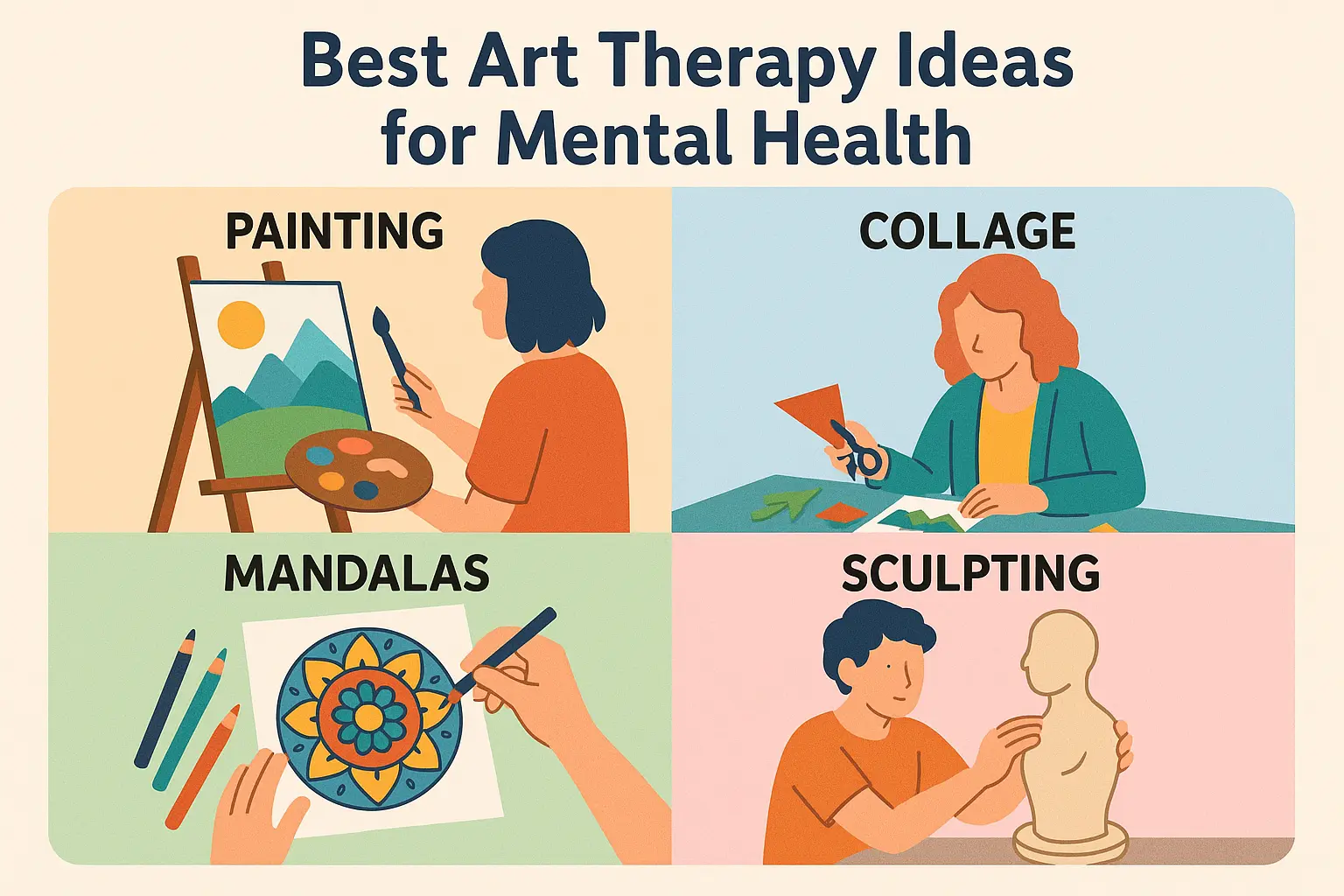
Mandala Drawing for Anxiety and Focus
Art therapy for mental health often starts with making mandalas. This practice blends meditation with creativity. Mandala drawing calms racing thoughts. It offers structure to those overwhelmed by open-ended creative tasks.
The circular shape of mandalas offers a sense of safety and containment. This makes mandalas a great art therapy tool for those dealing with anxiety or trauma. Repetitive patterns and symmetrical designs help you relax. They also keep your mind focused on the present moment.
Art therapy mandala techniques fit any skill level. You can create simple geometric patterns or dive into detailed designs with your own symbols and meanings. This flexibility makes it easy for anyone to create mandalas, no matter their art skills.
Collage Making for Emotional Expression
Mental health art therapy activities include collage work. This lets people show complex feelings by choosing and arranging images. This technique is great for those who feel stuck. It helps them connect with their feelings, even if drawing or painting feels hard.
Creating a collage is a safe way to explore your identity, goals, fears, and hopes. You choose images that connect with your feelings. Searching for and organizing images can surprise the creator. This process reveals new insights and feelings. It aids self-discovery and helps with emotional processing.
Art therapy examples for mental health show that making collages benefits both teens and adults. This method works well for those who find traditional therapy challenging. Cutting and pasting magazines is less scary than other art forms. It also offers strong therapeutic benefits.
Art Journaling for Daily Reflection
Art therapy ideas: Mental health practitioners often suggest art journaling. This daily practice blends visual expression with writing. This technique helps people track their mood. It also encourages reflection on daily experiences and builds steady self-care habits.
Art journaling needs a few supplies and fits any schedule. It's a great option for mental health art therapy. This is especially true for busy people or those with limited resources. The combination of words and images provides multiple pathways for expression and processing.
Art therapy through journaling boosts mental health. It helps people identify triggers, monitor their progress, and develop personalized coping strategies. Journaling helps track growth and healing. This record can encourage you during tough times.
Body Mapping for Trauma Processing
Body mapping is a strong art therapy technique for mental health. It helps people dealing with trauma or chronic health issues. This technique uses life-size body outlines. You add colors, symbols, and words to show physical feelings, emotions, and experiences.
Art therapy helps mental health through body mapping. It allows people to reconnect with their bodies and process stored trauma or tension. This technique shows how the mind and body connect. It also helps people build body awareness and self-compassion.
Creating body maps helps people express tough experiences. They can control what they explore and share. Trauma survivors often feel powerless during their experiences. This sense of agency helps them regain control.
Clay and Sculpting Work for Sensory Processing
Art therapy for mental health often uses three-dimensional materials, like clay or other sculpting tools. Working with clay engages the senses. This can be very healing for trauma survivors or anyone feeling disconnected from their bodies.
Working with clay helps release tension and emotions. You can knead, pound, and shape the clay to feel better. This activity helps those who hold stress in their bodies or feel numb emotionally.
Clay’s soft nature reflects therapy. People can change their creations, just as they change how they see themselves and their experiences.
Guided Visualization and Drawing
Combining visualization exercises with art boosts mental health. It taps into both conscious and unconscious thoughts, creating impactful art therapy experiences. This technique uses guided imagery. Next, you share the images, feelings, or insights from the visualization using art.
Art therapy with guided visualization offers many mental health benefits. It helps you tap into your inner wisdom. You can also process subconscious thoughts and improve your problem-solving skills. The combination of relaxation and creativity often produces surprising and meaningful artistic expressions.
This technique is great for people with anxiety or depression. The guided approach gives structure. Meanwhile, artistic expression helps them discover their own meaning.
How to Choose the Right Art Therapy Activity
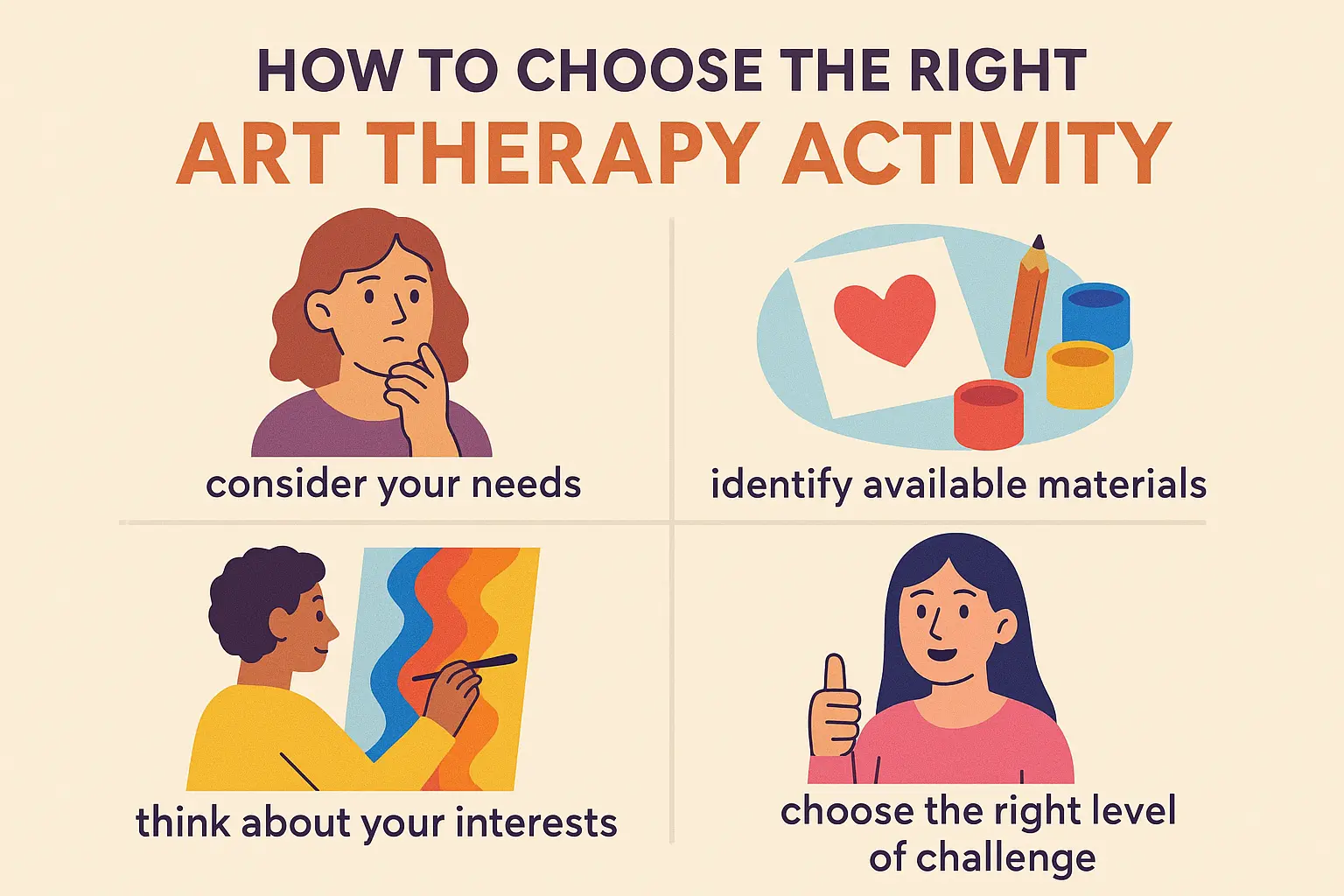
Matching Techniques to Personal Comfort and Goals
Choosing the right art therapy activities for mental health relies on personal preferences, comfort, and therapy goals. Consider how you connect with different art materials and techniques when choosing activities. Being comfortable with the medium boosts the therapeutic benefits.
Art therapy supports mental health patients by letting them choose their creative paths. Some people like structured activities, such as mandala drawing. Others enjoy open-ended exploration, like painting or collage work.
Your emotions can help you choose activities. When you're anxious, calming techniques, like making mandalas, can be great. For times you need to release energy or express feelings, try painting.
Consider practical factors like space, time, and budget when selecting mental health art therapy activities. Many effective techniques need just basic supplies. You only need paper, colored pencils, or magazines. This makes them easy to access, no matter your budget.
Solo and group art therapy each have unique benefits. Solo therapy allows for privacy and personal exploration. In contrast, group therapy fosters social connection and shared experiences. Many people benefit from combining both approaches.
When choosing art therapy ideas for mental health, safety is key. This is especially true for those with trauma or serious mental health issues. Select techniques that feel easy. Stay away from activities that might trigger strong emotions without professional support.
Simple Art Therapy Practices for Daily Mental Health
Quick Techniques for Home Practice
Here are some mental health art therapy ideas for daily practice. These simple techniques need little time and supplies. They can offer steady emotional support. These practices can fit into regular self-care routines. They help support mental wellness over time.
Color-based mood tracking is an easy daily habit. People pick colors that show how they feel. This helps them make simple art. This technique builds emotional awareness and creates a visual record of mood patterns over time.
Printable art therapy worksheets offer mental health activities for home practice. They include prompts and exercises to help explore specific themes or emotions. These resources make art therapy easier for people who like guided activities.
Five Minute Gratitude Art
Five-minute gratitude art means quickly sketching or coloring. You create simple images of things you’re thankful for each day. This practice blends positive psychology and creative expression. It helps support mental health by encouraging regular gratitude.
Mental health art therapy coloring pages help relieve stress and promote mindfulness. They do this by encouraging focused coloring. Adult coloring books for mental health have themes that help you relax. They also provide therapeutic benefits.
Daily creative check-ins take just a few minutes. Use this time for simple artistic expressions of your feelings. This practice boosts emotional awareness and offers a healthy outlet for daily stress.
Safety Tips and Professional Guidance
When to Seek Professional Support
Knowing when to use art therapy on your own and when to seek help is crucial for safe and effective healing. Many art therapy activities are safe to do at home. However, some situations need professional support.
Art therapy for mental health pros encourages seeking help when facing trauma, strong symptoms, or intense emotions during creative tasks. Professional art therapists have the training to help individuals process difficult material safely.
Setting emotional boundaries in art therapy helps you manage strong feelings during creative work. This way, you avoid feeling overwhelmed. Begin with easier topics. Then, move to tougher material as comfort and skills grow.
Art therapy can impact mental health by causing temporary spikes in emotions. As people express themselves creatively, hidden feelings may come to the surface. Understanding that this is a normal part of healing helps people cope with these experiences more easily.
Creating safe spaces for art therapy involves:
- Having support resources ready.
- Practicing self-care before and after sessions.
- Knowing when to pause or stop if things get too intense.
Art therapy in mental health treatment is most effective when paired with other therapies and professional care. Art therapy adds value to mental health treatment but does not replace it.
Professional mental health art therapy practitioners can:
- Use specialized techniques.
- Help process tough emotions safely.
- Assess progress and adjust methods.
- Link art therapy to overall treatment goals.
Conclusion
Art therapy ideas for mental health provide strong, accessible tools. They help with emotional healing and personal growth, complementing traditional treatment. Creative expression allows people to manage tough emotions, build coping skills, and grow resilience. It also allows them to enjoy meaningful activities.
Art therapy offers more than just symptom relief. It promotes personal empowerment, encourages self-discovery, and improves overall quality of life. Art therapy offers hope and healing, whether done alone or with help. It uses creativity to promote well-being.
Mental health art therapy is a simple way to boost your emotional well-being. You only need basic supplies and an open mind. Gendrics offers ways to begin your journey of creative healing and personal growth.
Art therapy and mental health recovery take time. Be patient and show yourself compassion. Begin with easy techniques that you find comfortable. Then, as you gain confidence and skills, try more complex methods.

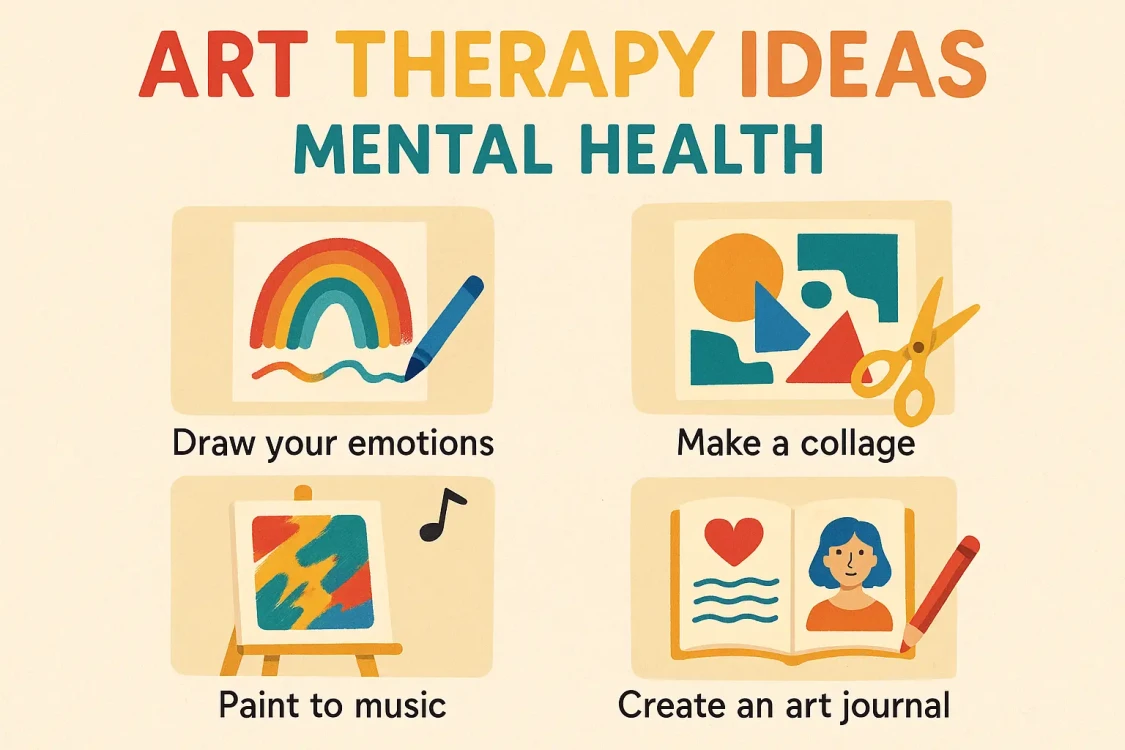
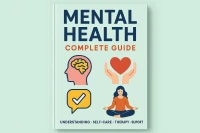
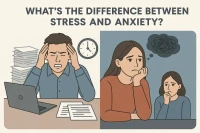
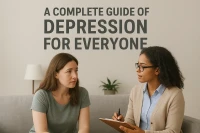
Comments